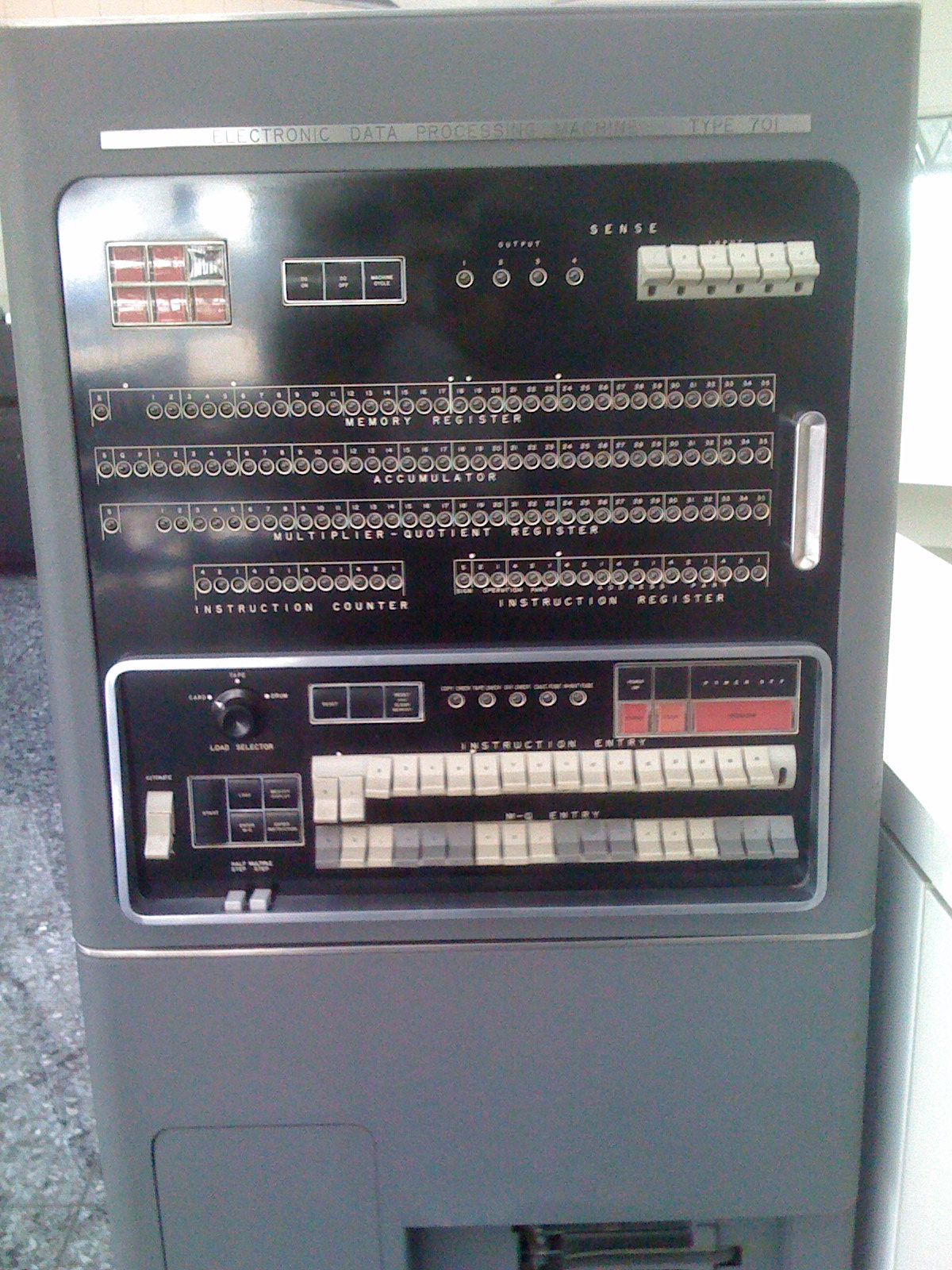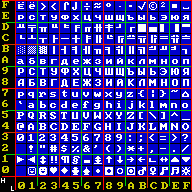|
HP Bert
The Saturn family of 4-bit ( datapath) microprocessors was developed by Hewlett-Packard in the 1980s first for the HP-71B handheld computer, released in 1984, and later for various HP calculators (starting with the HP-18C). It succeeded the '' Nut'' family of processors used in earlier calculators. The HP48SX and HP48S were the last models to use HP manufactured Saturn processors, later models used processors manufactured by NEC. The HP 49 series initially used the Saturn CPU until the NEC fab could no longer manufacture the processor for technical reasons in 2003. Starting with the HP 49g+ model in 2003, the calculators switched to a Samsung S3C2410 processor with an ARM920T core (part of the ARMv4T architecture) which ran an emulator of the Saturn hardware in software. In 2000, the HP 39G and HP 40G were the last calculators introduced based on the actual NEC fabricated Saturn hardware. The last calculators introduced to use the Saturn emulator were the HP 39gs, ... [...More Info...] [...Related Items...] OR: [Wikipedia] [Google] [Baidu] |
HP Saturn 1LT8 Clarke
HP may refer to: Businesses, groups, organisations * HP Inc., an American technology company ** Hewlett-Packard, the predecessor to HP before the 2015 split ** Hewlett Packard Enterprise, the other company created as a result of the split * HP Foods, British food products company * Handley Page, an aircraft company * Hindustan Petroleum, Indian petroleum company, subsidiary of Oil and Natural Gas Corporation * America West Airlines (1981–2006), an American airline (IATA code HP) * Amapola Flyg (2004–present), a Swedish airline (IATA code HP) * HP Books, an imprint of the Penguin Group#Imorints, Penguin Group * Populist Party (Turkey) (''Halkçı Parti''), a political party in Turkey between 1983 and 1985 Brands, products, items * Aero Adventure Aventura HP, an ultralight amphibian aircraft * China Railways HP, heavy freight train steam locomotive * Hilton-Pacey HP (car), a British 1920s 3-wheeled cyclecar automobile *HP Sauce, British sauce named after Houses of Parliament * ... [...More Info...] [...Related Items...] OR: [Wikipedia] [Google] [Baidu] |
ARM920T
ARM9 is a group of 32-bit RISC ARM processor cores licensed by ARM Holdings for microcontroller use. The ARM9 core family consists of ARM9TDMI, ARM940T, ARM9E-S, ARM966E-S, ARM920T, ARM922T, ARM946E-S, ARM9EJ-S, ARM926EJ-S, ARM968E-S, ARM996HS. ARM9 cores were released from 1998 to 2006, and no longer recommended for new IC designs; newer alternatives are ARM Cortex-M cores. Overview With this design generation, ARM moved from a von Neumann architecture (Princeton architecture) to a (modified; meaning split cache) Harvard architecture with separate instruction and data buses (and caches), significantly increasing its potential speed. Most silicon chips integrating these cores will package them as modified Harvard architecture chips, combining the two address buses on the other side of separated CPU caches and tightly coupled memories. There are two subfamilies, implementing different ARM architecture versions. Differences from ARM7 cores Key improvements over ARM7 cores ... [...More Info...] [...Related Items...] OR: [Wikipedia] [Google] [Baidu] |
Program Counter
The program counter (PC), commonly called the instruction pointer (IP) in Intel x86 and Itanium microprocessors, and sometimes called the instruction address register (IAR), the instruction counter, or just part of the instruction sequencer, is a processor register that indicates where a computer is in its program sequence. Usually, the PC is incremented after fetching an instruction, and holds the memory address of (" points to") the next instruction that would be executed. Processors usually fetch instructions sequentially from memory, but ''control transfer'' instructions change the sequence by placing a new value in the PC. These include branches (sometimes called jumps), subroutine calls, and returns. A transfer that is conditional on the truth of some assertion lets the computer follow a different sequence under different conditions. A branch provides that the next instruction is fetched from elsewhere in memory. A subroutine call not only branches but saves the ... [...More Info...] [...Related Items...] OR: [Wikipedia] [Google] [Baidu] |
Processor Register
A processor register is a quickly accessible location available to a computer's processor. Registers usually consist of a small amount of fast storage, although some registers have specific hardware functions, and may be read-only or write-only. In computer architecture, registers are typically addressed by mechanisms other than main memory, but may in some cases be assigned a memory address e.g. DEC PDP-10, ICT 1900. Almost all computers, whether load/store architecture or not, load items of data from a larger memory into registers where they are used for arithmetic operations, bitwise operations, and other operations, and are manipulated or tested by machine instructions. Manipulated items are then often stored back to main memory, either by the same instruction or by a subsequent one. Modern processors use either static or dynamic random-access memory (RAM) as main memory, with the latter usually accessed via one or more cache levels. Processor registers are normal ... [...More Info...] [...Related Items...] OR: [Wikipedia] [Google] [Baidu] |
Binary-coded Decimal
In computing and electronic systems, binary-coded decimal (BCD) is a class of binary encodings of decimal numbers where each digit is represented by a fixed number of bits, usually four or eight. Sometimes, special bit patterns are used for a sign or other indications (e.g. error or overflow). In byte-oriented systems (i.e. most modern computers), the term ''unpacked'' BCD usually implies a full byte for each digit (often including a sign), whereas ''packed'' BCD typically encodes two digits within a single byte by taking advantage of the fact that four bits are enough to represent the range 0 to 9. The precise four-bit encoding, however, may vary for technical reasons (e.g. Excess-3). The ten states representing a BCD digit are sometimes called '' tetrades'' (the nibble typically needed to hold them is also known as a tetrade) while the unused, don't care-states are named ''pseudo-tetrad(e)s'', ''pseudo-decimals'', or ''pseudo-decimal digits''. BCD's main virtue, in ... [...More Info...] [...Related Items...] OR: [Wikipedia] [Google] [Baidu] |
Word (computer Architecture)
In computing, a word is any processor design's natural unit of data. A word is a fixed-sized datum handled as a unit by the instruction set or the hardware of the processor. The number of bits or digits in a word (the ''word size'', ''word width'', or ''word length'') is an important characteristic of any specific processor design or computer architecture. The size of a word is reflected in many aspects of a computer's structure and operation; the majority of the registers in a processor are usually word-sized and the largest datum that can be transferred to and from the working memory in a single operation is a word in many (not all) architectures. The largest possible address size, used to designate a location in memory, is typically a hardware word (here, "hardware word" means the full-sized natural word of the processor, as opposed to any other definition used). Documentation for older computers with fixed word size commonly states memory sizes in words rather than bytes ... [...More Info...] [...Related Items...] OR: [Wikipedia] [Google] [Baidu] |
Bit-serial Architecture
In computer architecture, bit-serial architectures send data one bit at a time, along a single wire, in contrast to Parallel transmission, bit-parallel word (computer architecture), word architectures, in which data values are sent all bits or a word at once along a group of wires. All digital computers built before 1951, and most of the early massively parallel (computing), massive parallel processing machines used a bit-serial architecture—they were serial computers. Bit-serial architectures were developed for digital signal processing in the 1960s through 1980s, including efficient structures for bit-serial multiplication and accumulation. The HP Nut processor used in many Hewlett-Packard calculators operated bit-serially. Assuming N is an arbitrary integer number, N serial processors will often take less FPGA area and have a higher total performance than a single N-bit parallel processor. See also * Serial computer * 1-bit computing * Bit banging * Bit slicing * BKM a ... [...More Info...] [...Related Items...] OR: [Wikipedia] [Google] [Baidu] |
Nibble
In computing, a nibble, or spelled nybble to match byte, is a unit of information that is an aggregation of four- bits; half of a byte/ octet. The unit is alternatively called nyble, nybl, half-byte or tetrade. In networking or telecommunications, the unit is often called a semi-octet, quadbit, or quartet. As a nibble can represent sixteen () possible values, a nibble value is often shown as a hexadecimal digit (hex digit). A byte is two nibbles, and therefore, a value can be shown as two hex digits. Four-bit computers use nibble-sized data for storage and operations; as the word unit. Such computers were used in early microprocessors, pocket calculators and pocket computers. They continue to be used in some microcontrollers. In this context, 4-bit groups were sometimes also called characters rather than nibbles. History The term ''nibble'' originates from its representing half a byte, with ''byte'' a homophone of the English word ''bite''. In 2014, David B. Be ... [...More Info...] [...Related Items...] OR: [Wikipedia] [Google] [Baidu] |
Hp 48gII
The HP 49/50 series are Hewlett-Packard (HP) manufactured graphing calculators. They are the successors of the HP 48 series. There are five calculators in the 49/50 series of HP graphing calculators. These calculators have both algebraic and RPN entry modes, and can perform numeric and symbolic calculations using the built-in Computer Algebra System (CAS), which is an improved ALG48 and Erable combination from the HP 48 series. It is widely considered the greatest calculator ever designed for engineers, scientists, and surveyors. It has advanced functions suitable for applications in mathematics, linear algebra, physics, statistical analysis, numerical analysis, computer science, and others. Although out of production, its popularity has led to high prices on the used market. HP 49G The HP 49G (F1633A, F1896A), was released in August 1999. The 49G incorporated many of the most powerful interface and mathematics tools available on the HP 48 series into the firmw ... [...More Info...] [...Related Items...] OR: [Wikipedia] [Google] [Baidu] |
HP 50g
The HP 49/50 series are Hewlett-Packard (HP) manufactured graphing calculators. They are the successors of the HP 48 series. There are five calculators in the 49/50 series of HP graphing calculators. These calculators have both algebraic and RPN entry modes, and can perform numeric and symbolic calculations using the built-in Computer Algebra System (CAS), which is an improved ALG48 and Erable combination from the HP 48 series. It is widely considered the greatest calculator ever designed for engineers, scientists, and surveyors. It has advanced functions suitable for applications in mathematics, linear algebra, physics, statistical analysis, numerical analysis, computer science, and others. Although out of production, its popularity has led to high prices on the used market. HP 49G The HP 49G (F1633A, F1896A), was released in August 1999. The 49G incorporated many of the most powerful interface and mathematics tools available on the HP 48 series into the fi ... [...More Info...] [...Related Items...] OR: [Wikipedia] [Google] [Baidu] |
HP 40gs
HP 39/40 series are graphing calculators from Hewlett-Packard, the successors of HP 38G. The series consists of six calculators, which all have algebraic entry modes, and can perform numeric analysis together with varying degrees of symbolic calculation. All calculators in this series are aimed at high school level students and are characterized by their ability to download (via cable or infrared) APLETs or E-lessons. These are programs of varying complexity which are generally intended to be used in the classroom to enhance the learning of mathematics by the graphical and/or numerical exploration of concepts. HP 39g The HP 39g (F1906A) was released in 2000. Basic characteristics: * CPU: 4 MHz Yorke (Saturn core) * Communication: Proprietary infrared, serial RS-232 (serial port). * Memory: 256 KB RAM * Screen resolution: 131 × 64 pixels * Includes a hard cover * Limited symbolic equation functionality. HP 40g HP 40g (F1907A) was released in 2000 in p ... [...More Info...] [...Related Items...] OR: [Wikipedia] [Google] [Baidu] |



